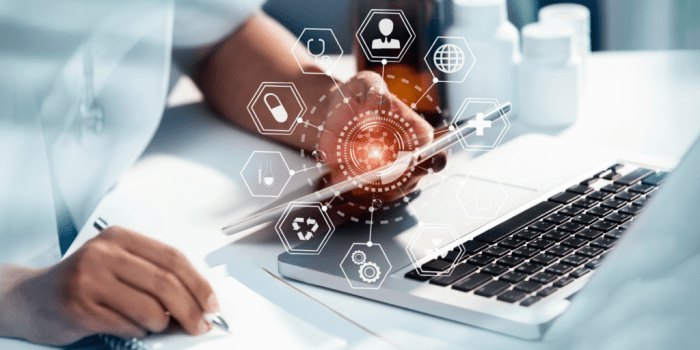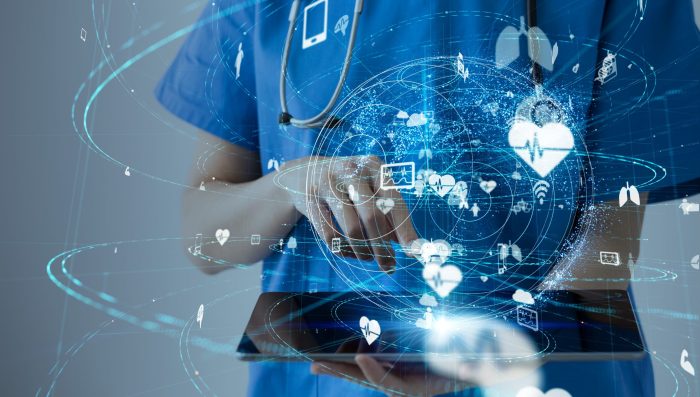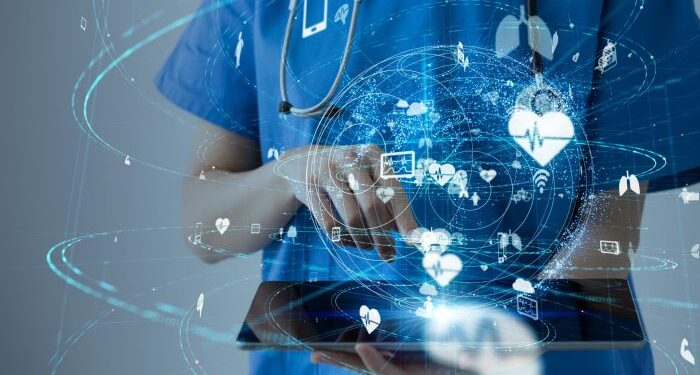Exploring the Significance of Health Information Technology and Why It Matters sets the stage for this enthralling narrative, offering readers a glimpse into a story that is rich in detail and brimming with originality from the outset.
Health Information Technology is a crucial aspect of the healthcare industry, revolutionizing the way patient data is managed and utilized. Let's delve deeper into this transformative field.
Overview of Health Information Technology
Health Information Technology (HIT) refers to the use of technology in healthcare to manage and exchange health information electronically. This includes electronic health records (EHRs), telemedicine, health information exchanges, and various other tools and systems that improve the quality of patient care.The importance of Health Information Technology in the healthcare industry cannot be overstated.
It enhances the efficiency and accuracy of medical records, reduces medical errors, improves communication between healthcare providers, and ultimately leads to better patient outcomes. By streamlining administrative tasks and enabling quick access to patient data, HIT enables healthcare professionals to make more informed decisions and provide personalized care.Over the years, Health Information Technology has evolved significantly.
From basic electronic health records to sophisticated data analytics and artificial intelligence applications, HIT has transformed the way healthcare is delivered. The adoption of HIT has increased rapidly, driven by regulatory requirements, financial incentives, and the need for more efficient and effective healthcare services.
As technology continues to advance, the potential for HIT to revolutionize healthcare and improve patient outcomes is immense.
Components of Health Information Technology

Health Information Technology comprises several key components that play a crucial role in modern healthcare systems. Two essential components are Electronic Health Records (EHR) and Health Information Exchange (HIE).
Electronic Health Records (EHR)
Electronic Health Records, commonly referred to as EHR, are digital versions of patients' paper charts. They contain a patient's medical history, diagnoses, medications, treatment plans, immunization dates, allergies, radiology images, and laboratory test results. EHR systems allow healthcare providers to access and share patient information securely, leading to improved coordination of care and patient outcomes.
Health Information Exchange (HIE)
Health Information Exchange (HIE) enables the electronic sharing of patient information among healthcare providers and organizations. It allows for seamless communication and exchange of patient data across different healthcare settings, such as hospitals, clinics, laboratories, and pharmacies. HIE promotes interoperability and collaboration among healthcare professionals, leading to better-informed decision-making, reduced medical errors, and improved patient safety and quality of care.
Benefits of Health Information Technology
Implementing Health Information Technology (HIT) systems comes with a myriad of advantages that significantly impact healthcare delivery, patient care, and overall efficiency within the healthcare industry. By leveraging technology to manage and exchange health information, healthcare providers can streamline processes, improve patient outcomes, and enhance overall quality of care.
Enhanced Patient Care and Safety
- Facilitates accurate and timely access to patient records, leading to better-informed clinical decisions.
- Reduces the likelihood of medical errors through tools like electronic prescribing and clinical decision support systems.
- Enables seamless coordination of care among multiple providers, ensuring continuity and preventing gaps in treatment.
Improved Efficiency in Healthcare Delivery
- Automates administrative tasks, such as billing and scheduling, allowing healthcare providers to focus more on patient care.
- Increases communication and collaboration among healthcare teams, leading to faster decision-making and better care coordination.
- Enhances data accuracy and completeness, reducing redundancies and ensuring that healthcare professionals have access to up-to-date information.
Challenges in Health Information Technology
Implementing Health Information Technology (HIT) comes with its own set of challenges that healthcare organizations need to address. These challenges can range from technical issues to regulatory compliance concerns.
Data Security and Privacy
- Ensuring the security of patient data is a top priority when implementing HIT systems. Healthcare organizations need to invest in robust cybersecurity measures to protect sensitive information from unauthorized access.
- Compliance with regulations such as HIPAA (Health Insurance Portability and Accountability Act) is essential to safeguard patient privacy. Failure to comply with these regulations can result in hefty fines and damage to the organization's reputation.
- Data breaches can have serious consequences, including identity theft and medical fraud. Healthcare providers must stay vigilant and continuously update security protocols to prevent cyber attacks.
Interoperability Challenges
- One of the biggest challenges in HIT is the lack of interoperability between different systems. Healthcare facilities often use a variety of software and hardware solutions that do not communicate effectively with each other.
- This lack of interoperability can lead to fragmented patient records, duplication of efforts, and inefficient care delivery. Healthcare providers need to work towards standardizing data formats and protocols to ensure seamless information exchange.
- Interoperability issues can also hinder care coordination and decision-making, as healthcare professionals may not have access to complete and up-to-date patient information when needed.
Future Trends in Health Information Technology

As technology continues to advance, the future of Health Information Technology (HIT) is filled with exciting possibilities that can revolutionize healthcare delivery. Emerging technologies are shaping the landscape of HIT, with Artificial Intelligence (AI), telemedicine, and remote patient monitoring playing key roles in transforming the industry.
Role of Artificial Intelligence (AI) in Advancing Health Information Technology
Artificial Intelligence is poised to revolutionize the way healthcare data is analyzed, leading to better patient outcomes and more personalized care. AI algorithms can process vast amounts of data quickly and accurately, helping healthcare providers make informed decisions and improve patient care.
Telemedicine and Remote Patient Monitoring in Healthcare
Telemedicine and remote patient monitoring are changing the way patients access healthcare services and how providers deliver care. These technologies allow patients to connect with healthcare professionals remotely, reducing the need for in-person visits and improving access to care, especially in rural or underserved areas.
Final Thoughts
In conclusion, the impact of Health Information Technology on healthcare is profound, paving the way for enhanced patient care and improved efficiency. This technology is not just a trend but a necessity in modern healthcare practices.
Answers to Common Questions
What are the key components of Health Information Technology?
Key components include Electronic Health Records (EHR) and Health Information Exchange (HIE) systems, which streamline data management and improve healthcare outcomes.
How does Health Information Technology enhance patient care?
Health Information Technology improves patient care by providing quick access to medical records, reducing errors, and enabling better coordination among healthcare providers.
What are some common challenges in implementing Health Information Technology?
Common challenges include data security issues, privacy concerns, and interoperability problems between different systems.



